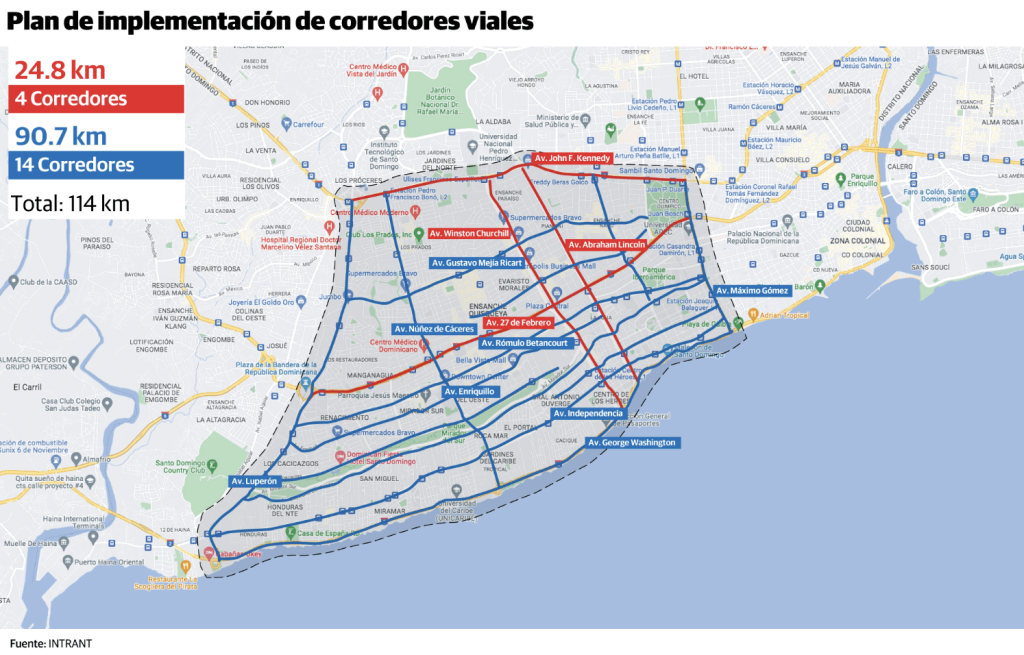
The National Institute of Transit and Land Transportation (Intrant) says it has contracted through the Ministry of the Presidency’s Trust for the Development of the Mass Transport System in the Dominican Republic (Fitram) with the Brazilian firm Imtraff.
The company is assisting Intrant with artificial intelligence to determine how to improve the transit system in Greater Santo Domingo. Hugo Beras, director of Intrant, says that significant changes are forthcoming. The Intrant continues to consider converting two of the most important north-south connecting roads, the Abraham Lincoln and Winston Churchill avenues into one-way avenues.
In addition to the Abraham Lincoln and Winston Churchill, the plans calls for intervening several other main avenues, included the John F. Kennedy, Máximo Gómez, Ortega y Gasset, 27 de Febrero, George Washington (Malecón), Independencia, Rómulo Betancourt, Enriquillo, Luperón, Núñez de Cáceres, Gustavo Mejía Ricart avenues, among others in the National District.
Diario Libre reports that before jumping into the deep and dangerous waters of urban traffic with this arsenal of transcendental decisions in the center of the city, Intrant has initiated a process of microsimulation of traffic in Greater Santo Domingo.
Microsimulation is a visualization made by a computer program that uses artificial intelligence on how traffic should behave in an avenue or street based on the information fed into this program: size of the road, lanes, intersections, number of vehicles circulating, obstacles, among others.
The Brazilian firm Imtraff is collecting the data obtained from the micro-simulation to better define the changes to public roads.
Beras told Diario Libre that before the changes are implemented, public hearings with the affected sectors of society (neighborhood boards, industries, merchants, and the general public) would be held.
“This is not invented. This comes on the basis of the studies that Intrant already has that have been done with the French Development Agency (AFD), the accompaniments with the Inter-American Development Bank (IDB), also the work that has been done with the National District”, said Beras.
The microsimulation process will also decide on changes in the timing of traffic lights, the possible widening of streets, the implementation of crosswalks and bicycle lanes.
Beras stated that the results of the microsimulation will be available as of January 2023 for the current study zone in the National District, and the other results will be ready in April or May.
Beras on 21 November 2022 signed an agreement with the Ministry of Education and OMSA government bus agency to provide school transportation. A pilot program will be undertaken in Monte Plata province.
Read more in Spanish:
Diario Libre
22 November 2022

